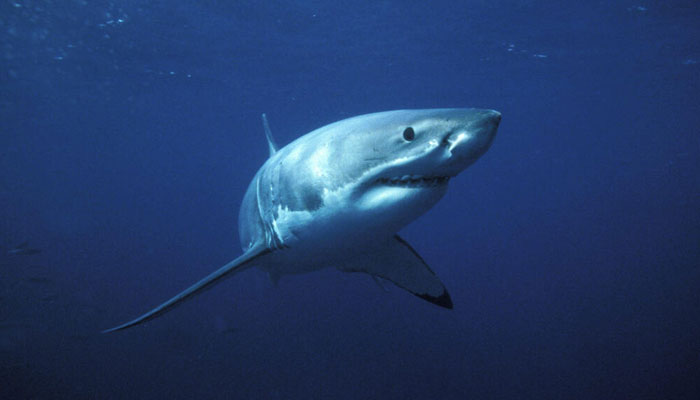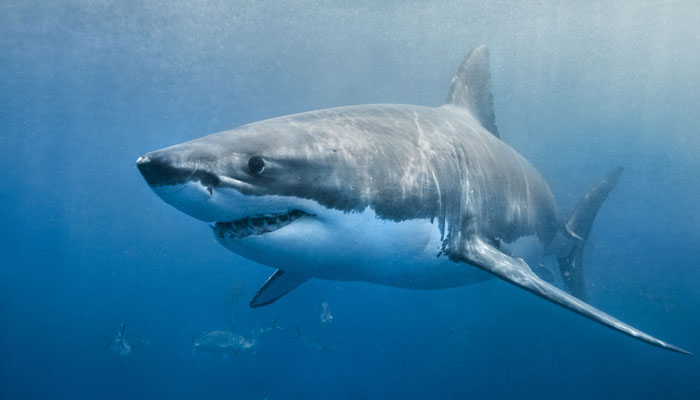Four male great white sharks spotted off coast of New York, New Jersey
Data suggests four sharks appear to be making their annual migration from Florida Keys up to US Northeast and Canada
May 29, 2023

According to OCEARCH data, it has recorded four great white sharks — male — swimming off the coasts of New York and New Jersey over the past few weeks.
A non-profit research group — which tracks shark migration and offers open-source data about their movements by placing electronic trackers on each shark — said that "ping" when the shark breaks the surface of the water, allowing researchers to track their annual migration and movement patterns.
According to the OCEARCH, Simon, a 9-foot long 434-pound juvenile great white, pinged off Fire Island on May 2 and is travelling 1,520 miles over the past 105 days.
Moreover, Jekyll, another juvenile who weighs 395 pounds and is 8 feet 8 inches long, pinged on May 15th off Long Island. The shark has travelled 1,595 miles over the past 102 days, said the non-profit research organisation.
It also noted that Jekyll was joined by Keji, another juvenile weighing almost 600 pounds and reaching over 9.5 feet in length, who pinged on May 17th. Keji has travelled 7,697 miles over the past 368 days.
On May 21, Frosty, a juvenile weighing 393 pounds and measuring 9 feet 2 inches long, also pinged off the coast of Rhode Island.

The data suggested that the four sharks appear to be making their annual migration from the Florida Keys up to the US Northeast and Canada.
OCEARCH previously told CNN that the sharks typically spend their summers in the "very rich feeding grounds", off the eastern US and Canada before returning south again for the winter.
The website of the marine life research institution also underlined that it captures sharks and takes biological samples from them before fitting each animal with a tracker. The sharks are then safely released into the wild.
Data from the University of Florida's International Shark Attack File highlighted that while New Yorkers may not need to get a bigger boat, eight out of 57 of the world’s unprovoked shark attacks last year — or 14% — occurred in New York, all at Long Island beaches.
The State Department of Environmental Conservation (DEC), the non-fatal assaults were committed by sand tigers and other small sharks. The Long Island encounters are believed to "have been the result of sharks misidentifying prey," said DEC spokeswoman Stephanie Rekemeyer.
Ocearch Chief Scientist Bob Hueter said: "That's kind of their nursery ground off of Long Island. And they haven’t really learned yet how to discriminate correct prey from people — they're not interested in us really and make a mistake. But they have sharp teeth and it’s never good to be bitten by one."
Last weekend, a 15-year-old girl was attacked by a shark while surfing off the coast of Stone Harbor, New Jersey.









